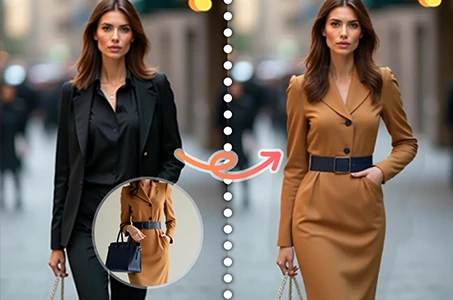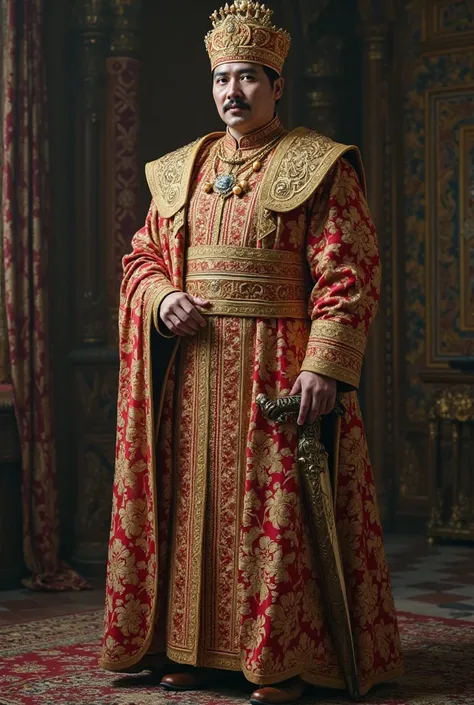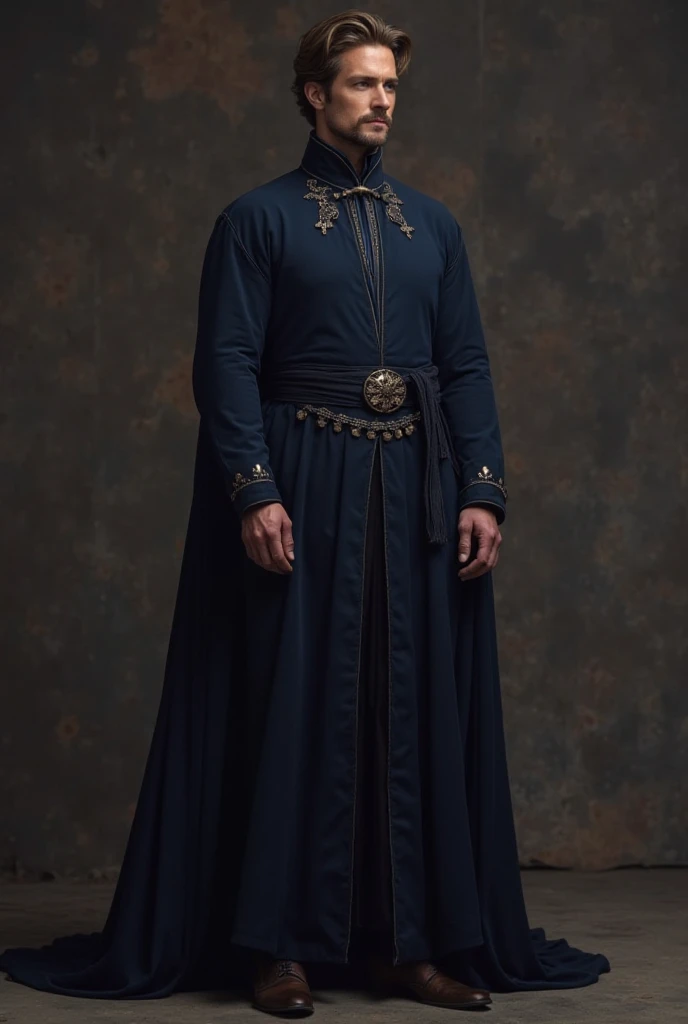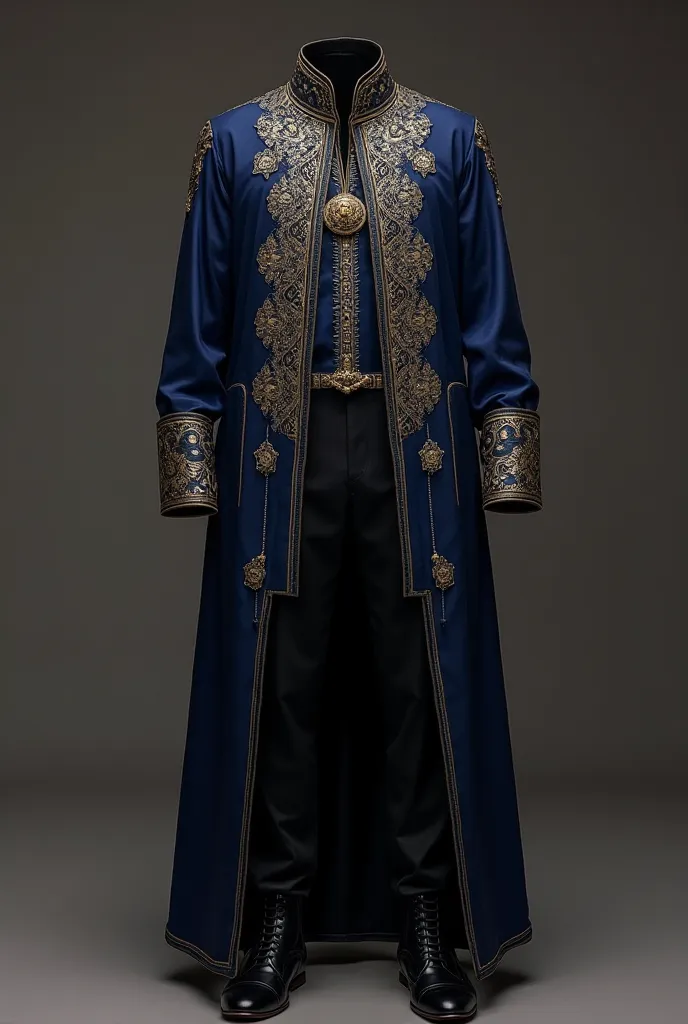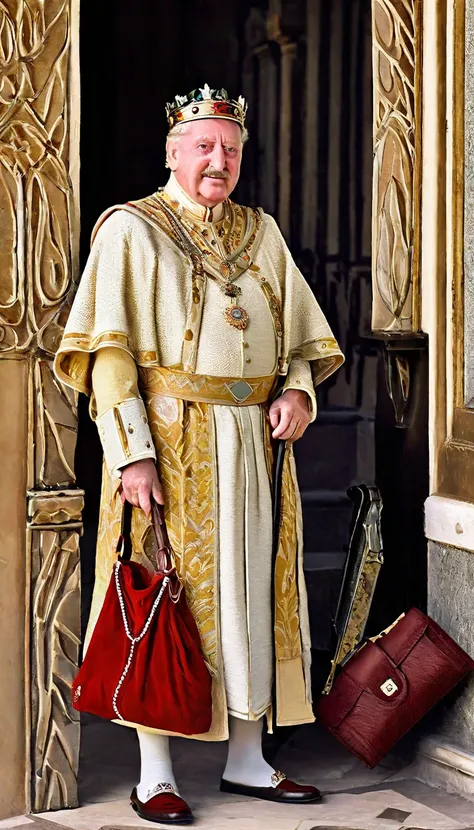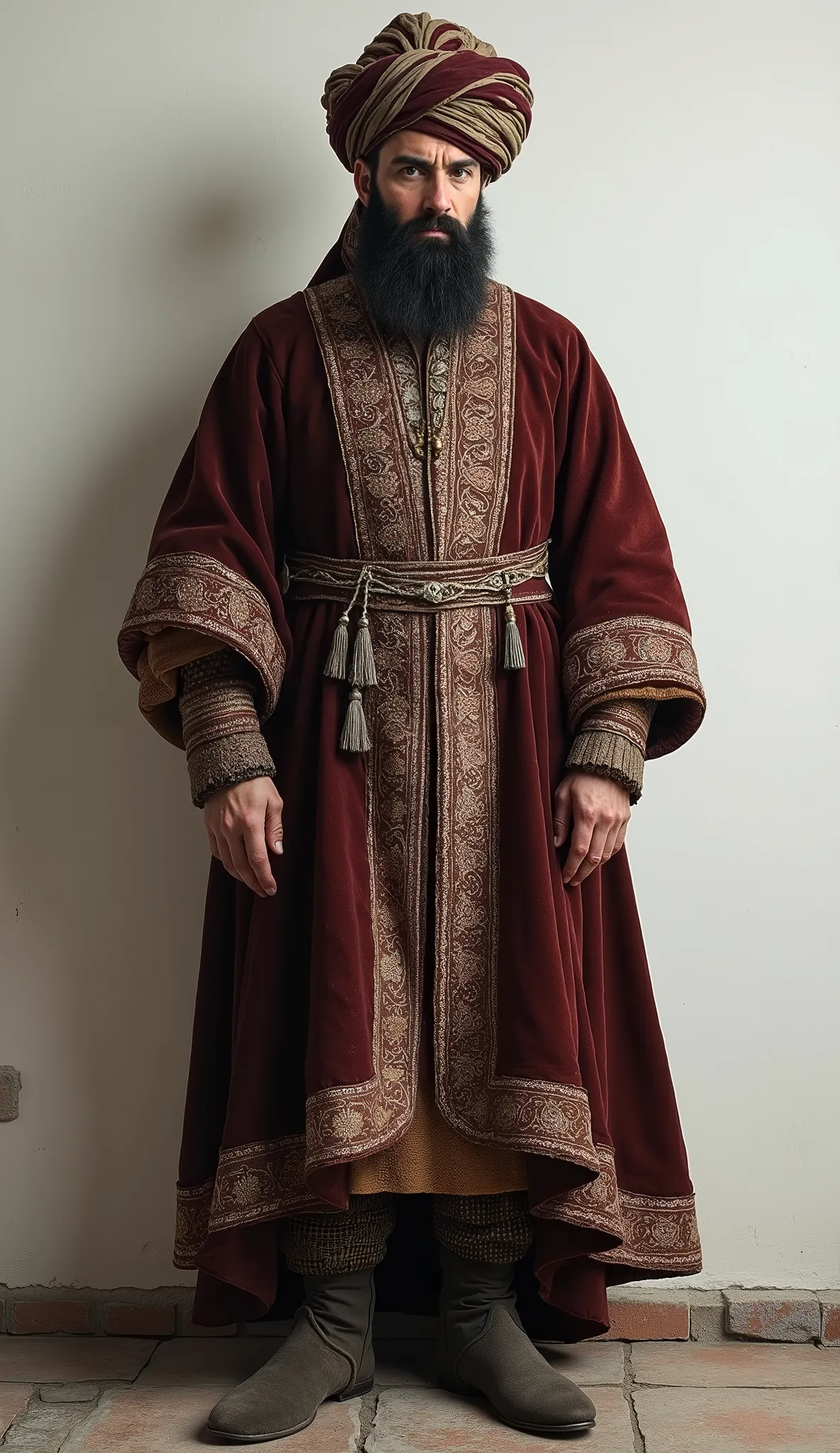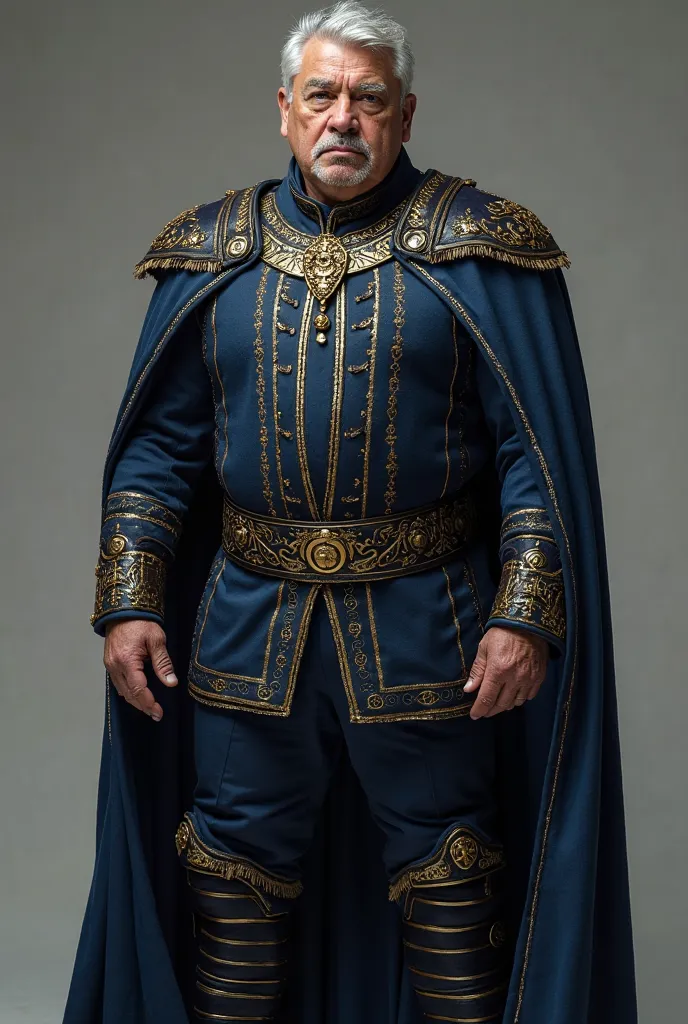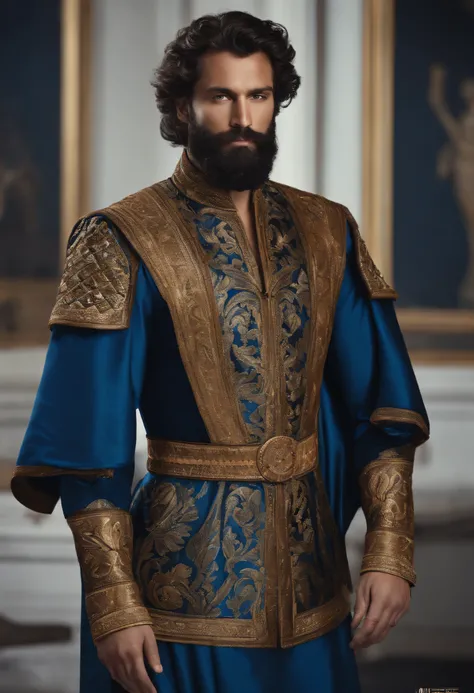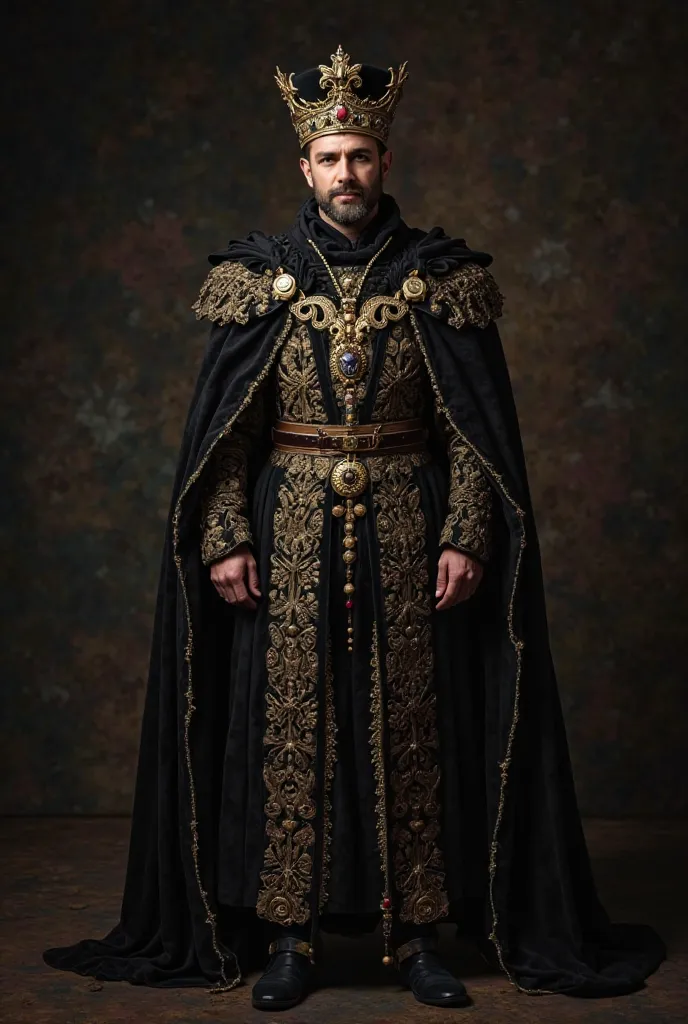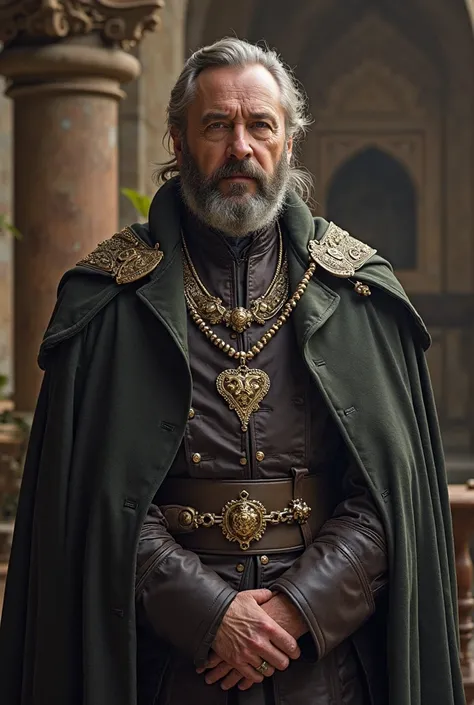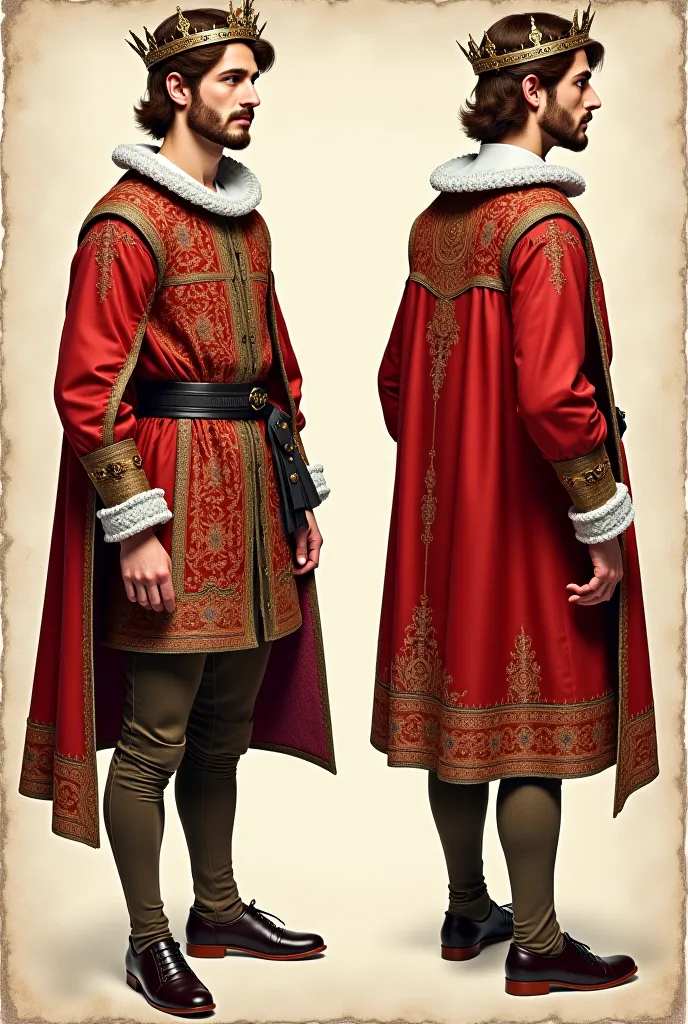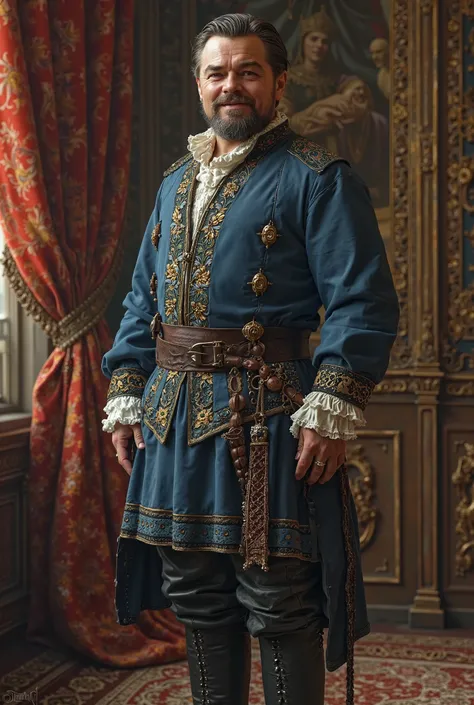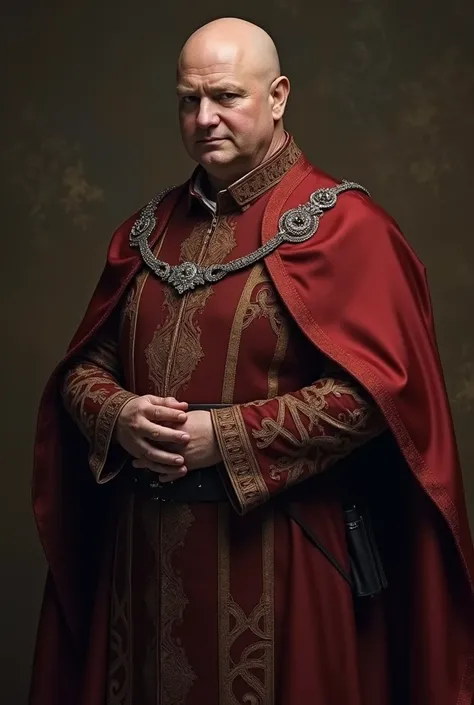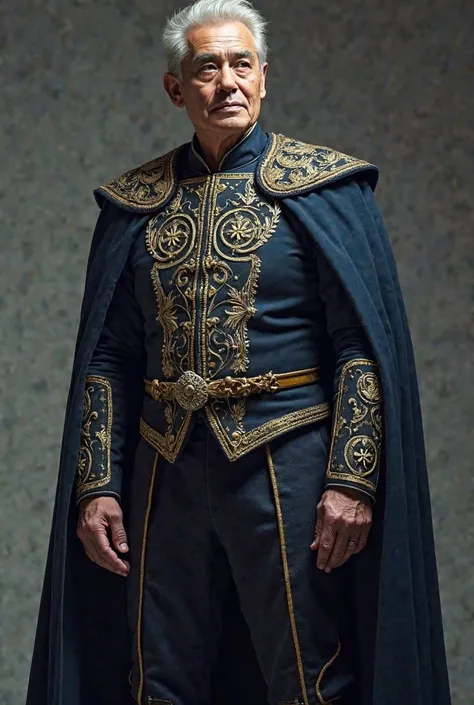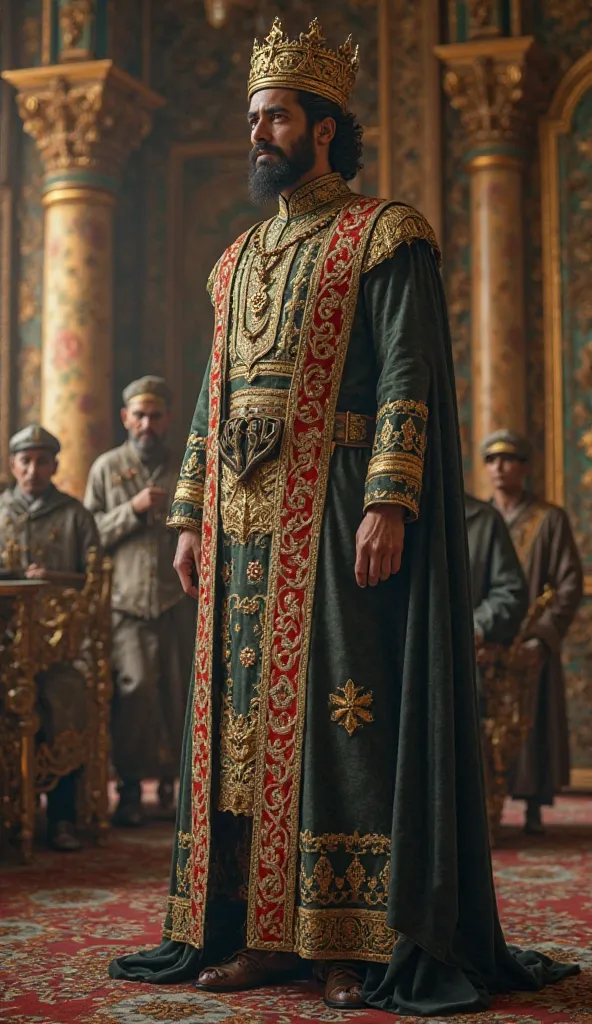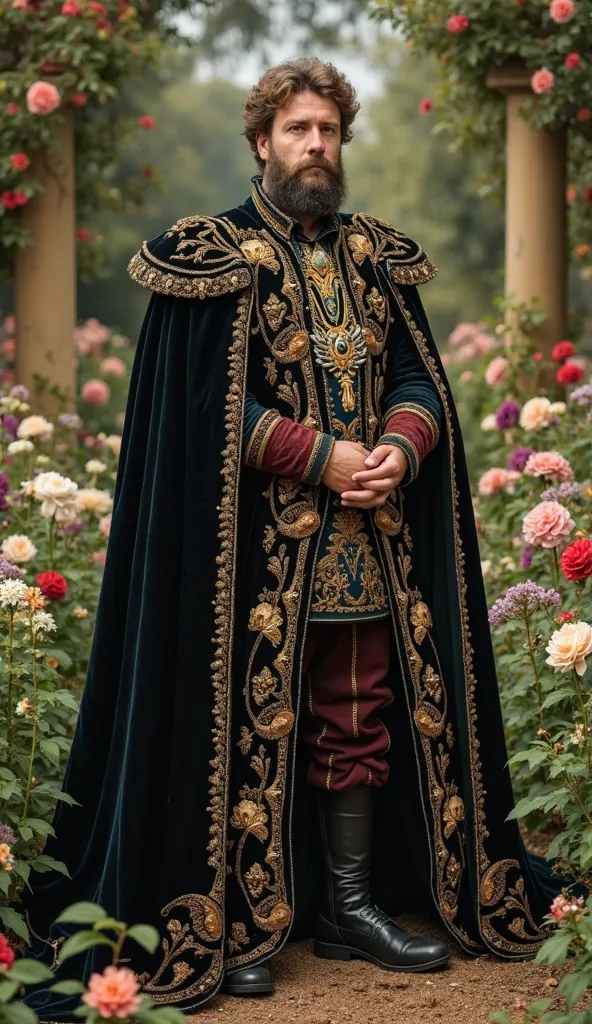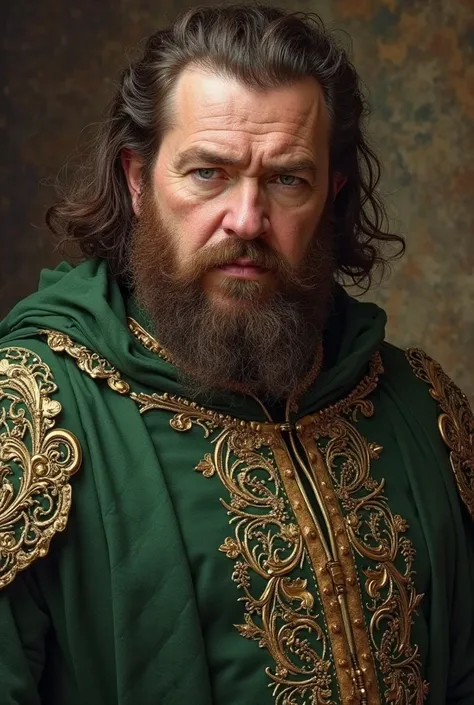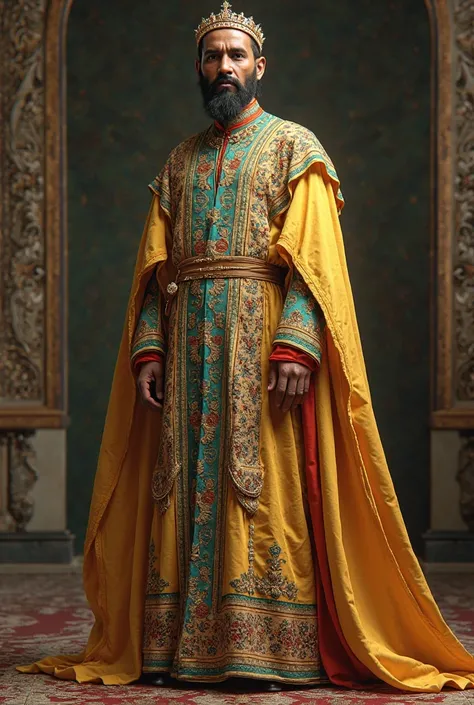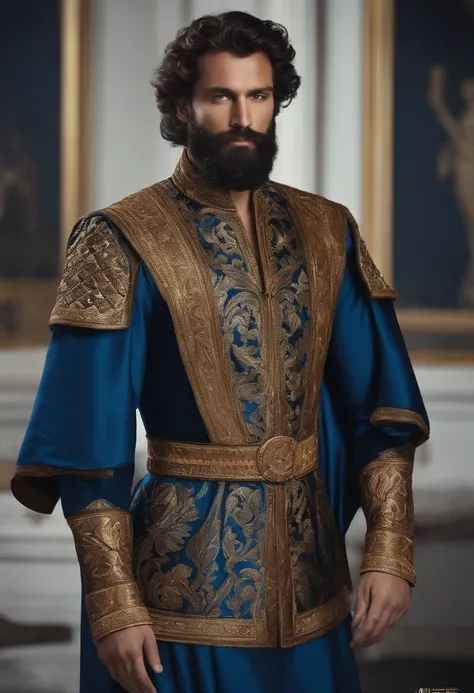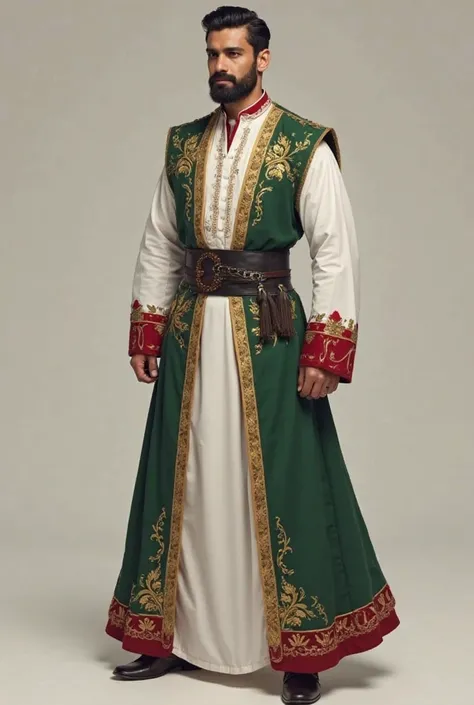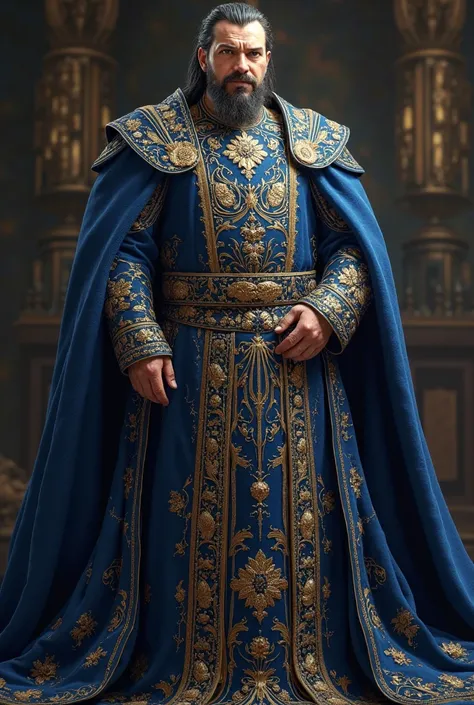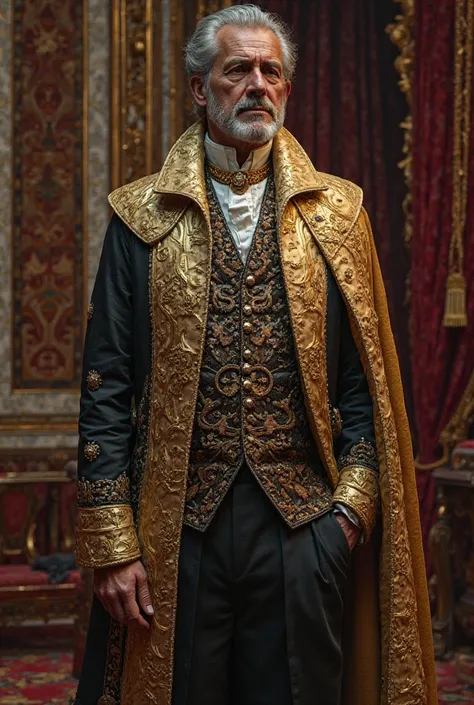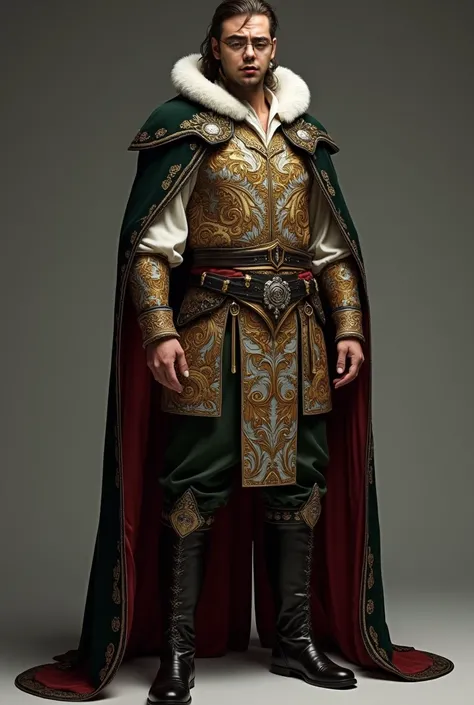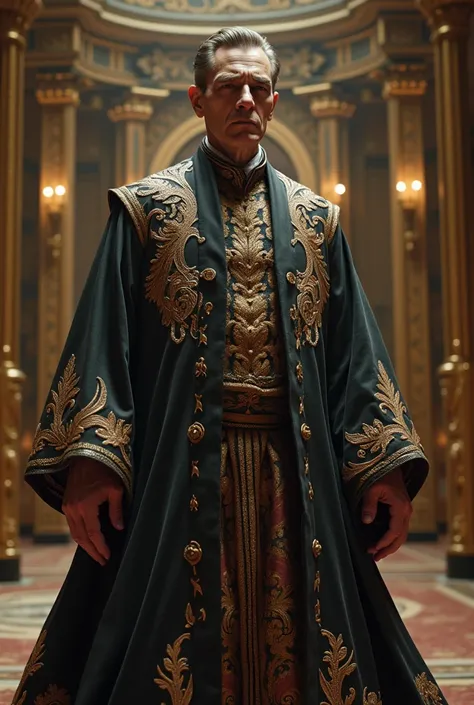In a historically accurate portrayal of Friedrich Barbarossa
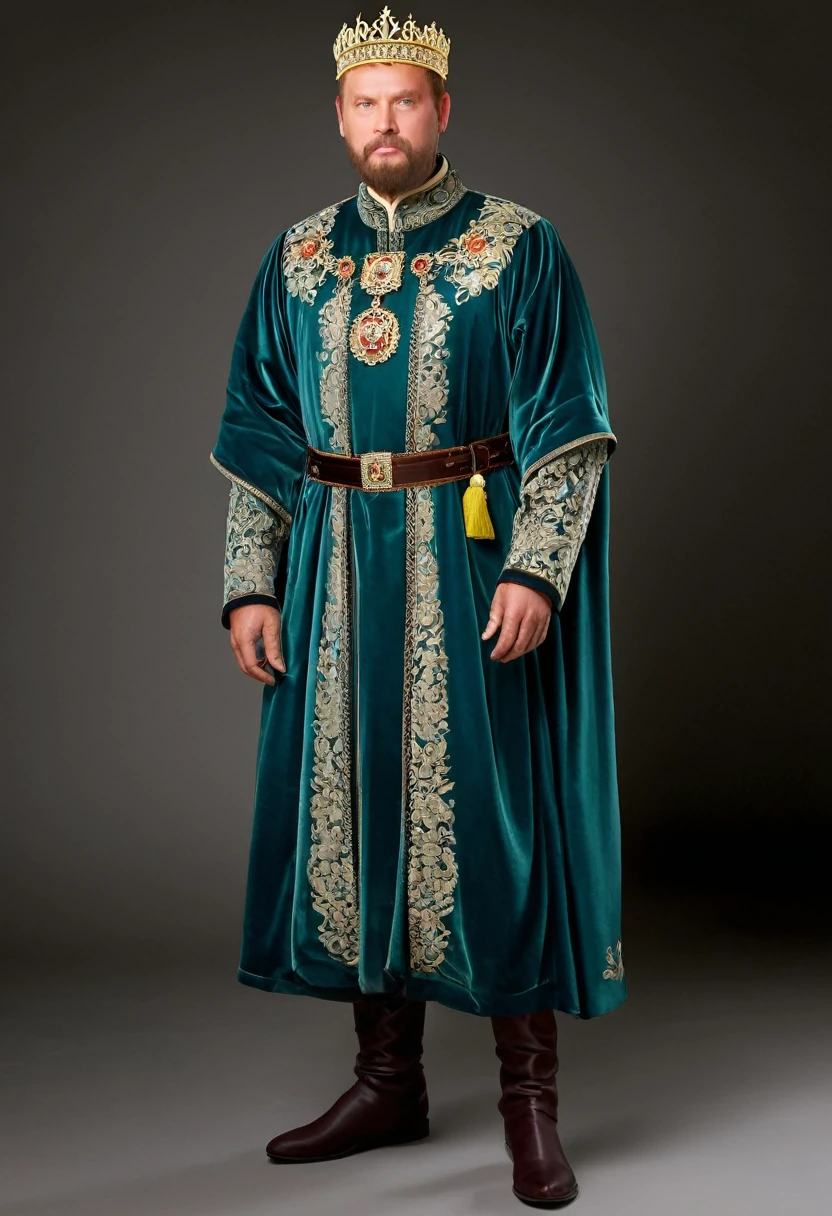
In a historically accurate portrayal of Friedrich Barbarossa, the Holy Roman Emperor of the 12th century, he would be dressed in attire befitting his royal status and the fashion of his era. Barbarossa would likely be adorned in elaborate garments made from luxurious fabrics such as silk, velvet, and brocade, reflecting his wealth and prestige. His attire would feature intricate embroidery, ornate trimmings, and perhaps even jewels or precious metals, signaling his status as a ruler of great power and influence. A long, flowing robe or tunic would serve as the centerpiece of his ensemble, adorned with symbols of his royal lineage and emblazoned with the imperial crest. Over this, he might wear a mantle or cloak of richly dyed fabric, draped elegantly over his shoulders and fastened with a jeweled clasp. Beneath his robe, Barbarossa would wear a shirt of fine linen or silk, tailored to fit closely to his body and adorned with lace or embroidered cuffs. His trousers would be similarly opulent, made from sumptuous fabrics and tailored to perfection. On his feet, Barbarossa would wear leather boots or shoes, embellished with decorative stitching or metal accents. His attire would be completed with accessories such as a crown or circlet, symbolizing his royal authority, and perhaps a sword or scepter, representing his role as a warrior and ruler. This historically accurate depiction of Friedrich Barbarossa's clothing captures the opulence and grandeur of the medieval imperial court, offering a glimpse into the lavish lifestyle of one of the most powerful figures of his time.
Generation Data
Records
Prompts
Copy
In a historically accurate portrayal of Friedrich Barbarossa
,
the Holy Roman Emperor of the 12th century
,
he would be dressed in attire befitting his royal status and the fashion of his era
.
Barbarossa would likely be adorned in elaborate garments made from luxurious fabrics such as silk
,
velvet
,
and brocade
,
reflecting his wealth and prestige
.
His attire would feature intricate embroidery
,
ornate trimmings
,
and perhaps even jewels or precious metals
,
signaling his status as a ruler of great power and influence
.
A long
,
flowing robe or tunic would serve as the centerpiece of his ensemble
,
adorned with symbols of his royal lineage and emblazoned with the imperial crest
.
Over this
,
he might wear a mantle or cloak of richly dyed fabric
,
draped elegantly over his shoulders and fastened with a jeweled clasp
.
Beneath his robe
,
Barbarossa would wear a shirt of fine linen or silk
,
tailored to fit closely to his body and adorned with lace or embroidered cuffs
.
His trousers would be similarly opulent
,
made from sumptuous fabrics and tailored to perfection
.
On his feet
,
Barbarossa would wear leather boots or shoes
,
embellished with decorative stitching or metal accents
.
His attire would be completed with accessories such as a crown or circlet
,
symbolizing his royal authority
,
and perhaps a sword or scepter
,
representing his role as a warrior and ruler
.
This historically accurate depiction of Friedrich Barbarossa's clothing captures the opulence and grandeur of the medieval imperial court
,
offering a glimpse into the lavish lifestyle of one of the most powerful figures of his time
.
INFO
Checkpoint & LoRA

Checkpoint
Juggernaut XL
#Realistic
0 comment
0
0
0






